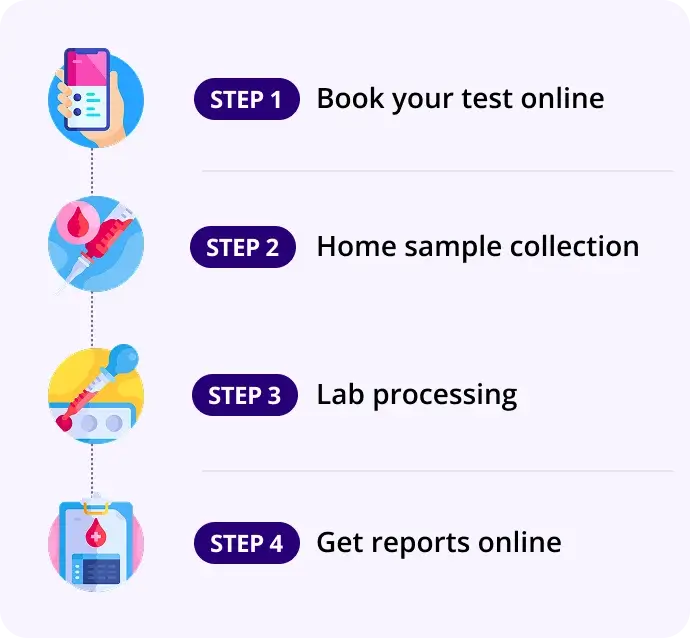Ferritin
Report in 16Hrs
At Home
No Fasting Required
Details
Reflects iron stores; low in iron deficiency anemia, high in chronic inflammation or hemochromatosis.
₹249₹800
69% OFF
🧪 What is Ferritin?
Ferritin is a protein complex that stores iron in a soluble, non-toxic form and releases it when needed. It reflects the body’s iron reserves, primarily stored in the liver, spleen, and bone marrow.
- Serum ferritin is a surrogate marker for total body iron stores.
- It is also an acute-phase reactant, meaning levels can rise in inflammation or chronic disease.
❓ Why is the Ferritin Test Done?
To:
- Diagnose iron deficiency anemia
- Monitor iron overload conditions (e.g., hemochromatosis)
- Differentiate between iron deficiency anemia vs anemia of chronic disease
- Evaluate chronic fatigue, hair loss, or restless legs syndrome
- Monitor iron therapy response
- Assess patients with chronic kidney disease, cancer, or autoimmune disease
📊 Normal Ranges
Group | Normal Ferritin Range |
|---|---|
Men | 30 – 400 ng/mL |
Women (non-pregnant) | 15 – 150 ng/mL |
Pregnant women (2nd/3rd trimester) | ≥ 30 ng/mL (but typically lower) |
Children | 7 – 140 ng/mL |
🔍 Ranges may vary slightly by lab. Levels should always be interpreted with CBC, serum iron, TIBC, and transferrin saturation.
📈 Interpretation of Ferritin Levels
Ferritin Level | Interpretation |
|---|---|
🔻 Low Ferritin (<15–30 ng/mL) | - Iron deficiency anemia (early marker) |
✅ Normal Ferritin | Adequate iron stores |
🔺 High Ferritin (>400–1000+ ng/mL) | - Iron overload (e.g., hemochromatosis) |
🧠 Associated Organs and Conditions
Organ | Role |
|---|---|
Liver | Major storage site for ferritin |
Bone marrow | Uses iron for red blood cell (RBC) production |
Spleen | Processes iron from aged RBCs |
GI tract | Iron absorption occurs here (mainly duodenum) |
Reticuloendothelial system | Iron recycling and inflammation-related ferritin elevation |
🔄 Related / Follow-Up Tests
- CBC (Complete Blood Count) – Evaluate hemoglobin, MCV
- Serum Iron
- TIBC (Total Iron Binding Capacity)
- Transferrin Saturation %
- CRP / ESR – To check if ferritin is elevated due to inflammation
- Liver function tests – If ferritin is very high
- Genetic testing for HFE mutations – If hemochromatosis suspected
- Bone marrow biopsy – Rarely, to assess iron directly in ambiguous cases
📝 Summary
Parameter | Summary |
|---|---|
What | Ferritin is the body’s main iron storage protein, measured in blood to reflect iron stores |
Why test | To diagnose iron deficiency or overload, monitor anemia, assess chronic disease |
Normal Range | 30–400 ng/mL (men), 15–150 ng/mL (women) |
Low Ferritin | Suggests iron deficiency, often before anemia is evident |
High Ferritin | May indicate iron overload or inflammation |
Follow-up | Serum iron, TIBC, transferrin saturation, CRP, genetic testing (if needed) |
How our test process works!

